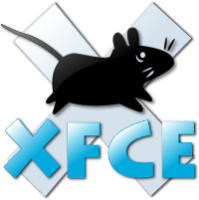It's not often that the likes of Microsoft, Apple, Oracle and EMC jump in to bed together, so when they do, you have to ask yourself what on earth they are up to.
Late last year Attachmate announced its plans to acquire Novell and that as part of the deal it will sell a whole bucket-load of patents (882, to be precise) to a mysterious outfit called CPTN Holdings for around $450 million. All that was known at the time was that Microsoft was behind CPTN, and Novell would continue to own the rights to UNIX.
What we've subsequently learned, thanks to those nice people at the Bundeskartellamt, Germany's national competition regulator, is that Apple, Oracle and EMC are also involved in CPTN.
The Open Source Initiative (OSI), a non-profit corporation that educates about and advocates for the benefits of open source, is so concerned about this unholy alliance that it has asked the Germans to investigate the transaction. Why the Germans? Perhaps because they have a record of imposing multi-million Euro fines on Microsoft (NASDAQ: MSFT) for anti-competitive behavior in the past, or maybe because the Bundeskartellamt was open to receiving comments about the transaction from the public.
Among the points the OSI has raised with the Bundeskartellamt are that:
* CPTN represents a serious threat to the growing use of open source software because its founders and leaders have a long history of opposing and misrepresenting the value of open source software.
* CPTN principals have substantial market power in operating systems (Microsoft, Apple and Oracle), middleware (Microsoft and Oracle), and virtualization and cloud computing (Microsoft, Oracle and EMC). Open source is a significant competitive threat in operating systems (Linux and Android), middleware (Apache and JBoss), and virtualization and cloud (KVM and Xen hypervisors).
* CPTN creates a cover to launch patent attacks against open source while creating for each principal a measure of plausible deniability that the patent attack was not their idea.
* The patents CPTN bought could be sold to non-practicing entities (NPEs), which could then create havoc for open source software without risking the adverse reaction of the market if Microsoft or one of the other three were to sue directly
Now let's not forget that as yet no one outside of Novell and CPTN knows exactly which patents make up the 882. What we do know is that they don't include anything to do with direct ownership of UNIX. We can also speculate that they are connected with networking, virtualization and data center technologies -- three areas in which Novell has been heavily involved. Bear in mind the words of Gregory House, however: "The problem with speculation is it makes a speck out of you and some guy named Lation."
So going back to the original question of what on earth Microsoft, Apple, Oracle and EMC could be up to, the OSI's worry is that they plan to hide behind CPTN while launching patent attacks against open source software directly, or through third parties to which CPTN sells patents. The reason OSI believes the four may do this is that they have a history of open source software, and because open source software poses a threat to them in the fields of operating systems, middleware, and virtualization and cloud.
I for one don't buy that for a moment. Open source software certainly competes with products these four companies sell, but the point that OSI's argument ignores is that these companies also compete with each other -- ferociously at times. The idea that Microsoft, Apple, Oracle and EMC all have their backs to the wall, trapped together like dogs awaiting the final coup de grace from the open source community, and their only hope of salvation is to band together to become patent trolls, is, frankly, rather preposterous. Open source software is great, but it's not that great, and Microsoft, Apple, Oracle and EMC are far from being technology dinosaurs with nothing but their patent portfolios to profit from.
Related Articles
What other possibilities are there then? Maybe Microsoft wanted to gets it hands on some of the patents, but it knew that attempting to buy them alone would be impossible for anti-trust reasons, so it came to "an arrangement" with the other three? Possibly.
Perhaps the four bought them out of the kindness of their hearts, to license for a nominal fee to all and sundry for the benefit of the community as a whole? Seems unlikely.
Or, perhaps all four companies wanted to avoid a bidding war and agreed to share ownership of them to guarantee access to the technologies they represent at a low price. John Paczkowski over at All Things Digital reckons an insider at one of the big four confirmed just that. "We get to buy in at a cheap price and get a license to a very valuable portfolio. It's cheap defensive insurance," the unnamed individual told him.
It's certainly plausible: a defensive move that keeps the playing field even. Microsoft, Apple, Oracle and EMC working together in this way is nothing the OSI should be worked up about. Probably.


